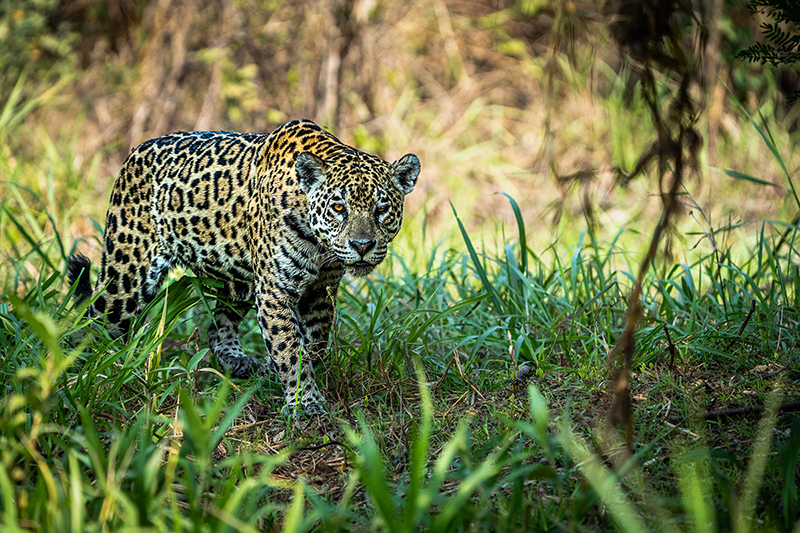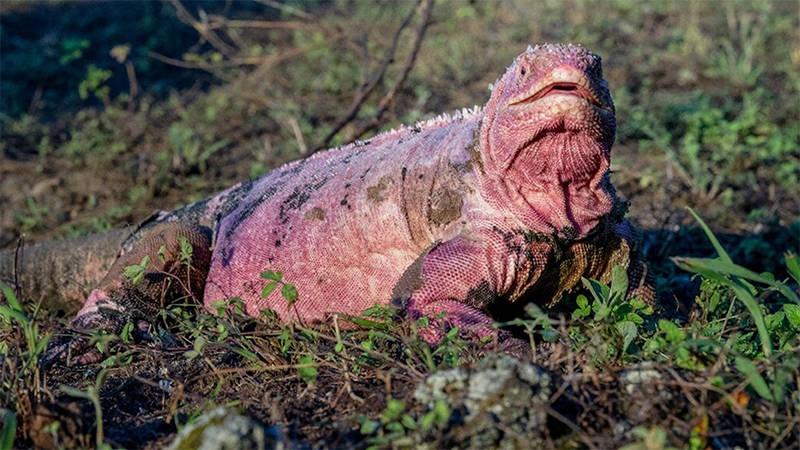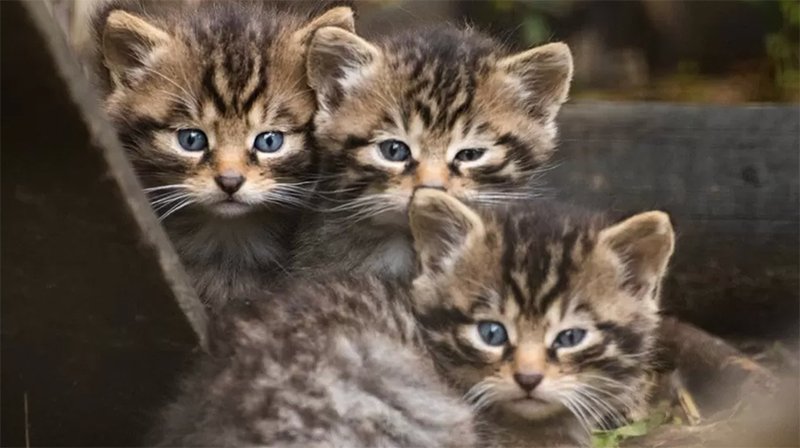Volcanoes are erupting in The Philippines, but on-fire Australia received some welcome rain. The Iran war cries have been called off and The Donald’s military powers are about to be hamstrung by the Senate. Meanwhile, his impeachment trial is starting, and we’re all on Twitter for a front-row seat.
What Could Go Right? 50+ animal comebacks
We are now seeing the results of conservation efforts to save endangered species.
This is our weekly newsletter, What Could Go Right? Sign up here to receive it in your inbox every Thursday at 6am ET. You can read past issues here.
It’s widely known that humans have negatively influenced animal populations, driving many species to extinction or near it. Though issues continue through today, our concern and energy around such activity differs greatly from our ancestors of even a century ago, when humans were hunting and fishing with complete abandon.
Since around the 70s, governments have given biodiversity protection more priority and NGOs dedicated to it have proliferated, leading to conservation efforts that have actually, in several instances, been successful. We also continue to discover new species—380 between 2021 and 2022—although many of them are endangered.
These success stories appear regularly in the news, although they can be hard to spot. Together, however, they lend evidence to the fact that species recovery is an ongoing, global project that we can expect we will only get better at.
Below, we have gathered all the “animal comeback” stories from the first six months of 2023. (There would have been more if we had included plants, as well as rewilding and river recovery stories.) All of these triumphs are hard-won, many are delicate, and one or two are too early to call. But they show that we are able, with the right focus, to turn back the clock.
The species’ status is included when it was noted by the original coverage.
Australia
Delisted?: Recent research shows that 26 Australian species—14 mammal, eight bird, two frog, one reptile, and one fish—no longer meet criteria to be listed as threatened. Their names are spectacular, including the greater bilby, burrowing bettong, eastern barred bandicoot, and sooty albatross. | The Guardian
Australians are rewilding rats—specifically, native bush rats that drive out another species of rat, the black rat, which is invasive. Bush rats aren’t endangered, but their successful reintroduction to a coastal reserve near Sydney Harbor paves the way for “riskier” ones. | Hakai
Critically endangered: The Victorian grassland earless dragon, last seen 50 years ago and feared extinct, has been refound. Its location is secret as the government prepares conservation efforts and sends out dragon-sniffing dogs to find more of them. | The Guardian
Belgium
Seal-only zones—and the quiet of the COVID-19 lockdown—have helped seals return to Belgium, where they had disappeared as of 20 years ago. Unlike the red squirrels below, seals are not to be fed if seen! | Euronews
Brazil
Ecotourism and other solutions made in relationship with cattle ranchers have helped to grow jaguar populations. Jaguars would have died out if not for tourists, say Brazilian conservationists, because the ranchers were killing the animals for eating their cattle. | Mongabay

Vulnerable: The three-banded armadillo’s only defense is to roll itself up into a ball. That’s less than useful when it comes to protecting themselves against hunters, who simply scoop them up and sell them. But now their numbers are multiplying thanks to community involvement. | Mongabay
Cambodia
Critically endangered: Hunting drove Siamese crocodiles to the brink of extinction in the early 1990s. Fewer than 200 individuals were rediscovered in the early millennium, and since then, numbers have been growing due to poacher patrols and other conservation efforts, like a new wildlife reserve. | National Geographic
Endangered: The same folks managing the Siamese crocodile comeback, above, are also breeding royal turtles, which were thought to be extinct until 2000. The latest hatch bore 122 turtles. | The Phnom Penh Post
Ecuador
Critically endangered: Predators like rodents and feral cats have likely prevented young Pink land iguanas, which live on the Galapagos Islands, from reaching adulthood. Hatchling and juvenile populations have just been discovered for the first time. | Popular Science

Vulnerable: Another Galapagos win: Darwin’s flycatchers, a bright orange bird, are down to just 15 breeding pairs. But 12 chicks were born this year, the first success since a conservation program began in 2018. | Euronews
England
Beavers are returning all over England, due to both official efforts and citizen conservationists, so-called “beaver bombers”—also known as “beaver black ops”—who are secretly (and illegally) reintroducing beavers to waterways. Beaver populations are now over a million, up from just over a thousand in 1902.
Finland
Highly endangered: The Finns are delighted to see a high number of Saimaa ringed seal pups born this year, the highest number since the Finnish wildlife service began tracking births. A ban on fishing nets is helping the seals recover. | YLE

Hong Kong
Overharvesting and lime dredging have destroyed oyster reefs, decimating oyster populations as well as those of several other species that live in these marine habitats. Groups in Hong Kong are working on restoring the reefs and creating new ones, making space for animals like the endangered horseshoe crab. | Mongabay
India
Endangered: More than 10,000 rural women—the “hargila army”—came together to save the Hargila stork through creative strategies, including convincing locals to turn it into a cultural symbol of the area. | The Guardian
The conservation of the world’s only Asiatic lion population, in Gujarat, India, has been so successful that the lions became overcrowded, and a court had to mandate some of them to be relocated elsewhere in India. | The Guardian
India is celebrating 50 years of Project Tiger, which began in the 70s but didn’t begin to bear fruit until after 2008. Now India is home to the world’s only stable and growing tiger population, with thousands of tigers across 53 reserves. | Christian Science Monitor
Indonesia
Endangered: In a global first, 500 baby zebra sharks will be released in Indonesia in order to bring back a “self-sustaining wild population.” There is no guarantee it will work, but hopes are high given the young sharks’ home, critically, is one where shark fishing is off-limits. | National Geographic
Korea
The demilitarized zone between North and South Korea is now surprisingly a wildlife sanctuary, where “38 percent of the endangered species of the Korean peninsula live,” in addition to hundreds of plant species. | BBC
Philippines
Endangered: Egg stealers turned conservationists are being paid to find five species of sea turtle eggs and turn them over to a program that reburies them in protected areas. | Reuters
(The United Arab Emirates is also working on rescuing sea turtles.)
Portugal and Spain
After a parallel reintroduction program in the two countries, the Iberian lynx is “bounding toward recovery,” pulling rabbits along with it. | Biographic
Scotland
It’s red versus grey in Scotland, where red squirrels were slowly being wiped out by their grey counterparts. Now the red squirrel population is “thriving,” and locals are encouraged to feed the red squirrels if they see them, to continue boosting their numbers. | BBC
The Saving Wildcats Project released four wildcat kittens into the wild this year, in a bid to save them from extinction. The plan is to eventually release 20 every year. This one can’t be counted as a success quite yet, though. | BBC

Senegal
Only a few hundred, at best, West African lions remain. In a national park in Senegal, 29 of these lions are monitored closely. When one, Florence, disappeared, officials feared she may have been poached. Surprise! She had been caring for three newborn cubs, giving hope that the lion population will continue to expand. | The Guardian
Uganda
Endangered: Elephants, rhinos, buffalos, and mountain gorillas are all steadily recovering after the government enacted conservation policies post-1980s. | Reuters
United States
Threatened: The Fender’s blue butterfly was thought extinct until 1989. Now it has the official OK from the US Fish and Wildlife Service to be classified as “threatened,” rather than “endangered.” Their numbers are now in the tens of thousands. | Statesmen Journal

Delisted: A sparrow (as well as four plant species) unique to San Clemente Island in California has been “delisted from protective status” by the US Fish and Wildlife Service. The Navy, which manages the island, removed the goats that were destroying the ecosystem in the 1990s, paving the way for success. | KPBS
Endangered: Twenty-five years ago, the Mexican wolf was nearly extinct. Wolves raised in captivity were released for the first time into the wild in 1998, and today, the population is about 100 wolves short of reaching the goal that would move them from “endangered” to “threatened.” | Cronkite News
No longer endangered?: The US Fish and Wildlife Service is also considering removing the wood stork, which lives primarily in Florida, from the endangered list now that 10,000 breeding pairs have been counted. | NPR
Endangered: The blue whale population is now at 97 percent of their pre-whaling numbers! | One Green Planet
Quick hits
“Toyota says it has made a technological breakthrough that will allow it to halve the weight, size and cost of batteries,” reports The Guardian. If true, this would be big for electric vehicles. If not, an ambitious goal like this one pushes others along.
By the way, if you want to contribute to an animal cause but don’t have the cash to donate to any of the groups mentioned above, you can help Dutch fish escape predators by ringing a “doorbell” to let them through a dam in Utrecht.
Below in the links section, $10 day care, MDMA for PTSD, drinking water recycled from urine and sweat, and more.

Progress, Please
(Found good news? Tweet at us @progressntwrk or email.)
Other good stuff in the news 🧑🚀
Energy & Environment:
- US is on track to halve emissions by 2035, but this still isn’t enough | New Scientist
- China’s green power surge offers hope on warming | BBC
- Infrastructure funding is bringing zero-emission buses to communities that need them most | Grist
- 600MW of solar mini-grids have reached 5M Nigerians | ESI Africa
Public Health:
- A new TB vaccine could save 8.5M lives over the next quarter of a century | The Economist
- Australia offers MDMA drug therapy for PTSD, a world first | The Washington Post
- How a heavily armed country cut gun suicide | Think Global Health
- A blood test predicts pre-eclampsia in pregnant women | The New York Times
Science & Tech:
- Scientists use stem cells to create models of human embryos and study our earliest days | AP
- Astronauts’ urine and sweat are almost entirely recycled into drinking water with new system | NBC News
- Scientists have finally ‘heard’ the chorus of gravitational waves that ripple through the universe | AP
- Gravitational waves should change how you see the world | The Atlantic
Politics & Policy:
- Day care for less than $10: How Canada is easing the burden for parents | The New York Times
- How Kosovo made high-speed internet access a reality for everyone | World Economic Forum
- Malta to allow abortion but only when woman’s life is at risk | The Guardian
- Sharing deepfake intimate images to be criminalized in England and Wales | The Guardian
- New Zealand bans plastic bags for fresh produce in supermarkets | BBC
- Wealthy nations pledge $100B in climate finance | World Economic Forum
Society & Culture:
- Activists hail Nepal ruling allowing same-sex marriage | Reuters
- Why Nepal could be the next big LGBTQ travel destination | CNN
- Why are Vietnam’s schools so good? | The Economist
TPN Member originals 🧠
(Who are our Members? Get to know them.)
- SCOTUS rejects independent state legislature theory | Isaac Saul
- Levels of safety for AI and other technologies | Jason Crawford
- 19 thoughts on affirmative action | Matthew Yglesias
- The triumph of coming in third | Arthur C. Brooks
- Biden isn’t getting the credit for the economy he deserves | David Brooks
- Burn down the admissions system | Yascha Mounk
- Is the American Dream dead? | John Wood Jr. 🎧
- 5 fascinating questions—and answers—about AI | James Pethokoukis
- Is guilt-free meat possible? | Bina Venkataraman
- On race and academia | John McWhorter
- Putin’s endgame in Ukraine | Ian Bremmer 🎧
- Why are young liberals so depressed? | Matthew Yglesias
- AI and the noosphere | Robert Wright
Department of Ideas 💡
(A staff recommendation guaranteed to give your brain some food for thought.)
Rational magic | The New Atlantis
Why a Silicon Valley culture that was once obsessed with reason is going woo.
Why we picked it: Maybe rationality can’t solve everything? —Brian Leli
Until Next Time
It’s a star war . . . It’s a space blizzard . . . It’s the super awesome view from the surface of a comet! ☄️


